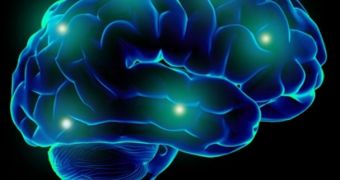A collaboration of researchers from American universities is currently taking a new approach towards deciphering the interactions that occur between nerve cells in the human brain called neurons.
Scientists have been trying to produce a map of the brain for years, but this is a tremendously complex task, and one that does not suffer the possibility of error. If developed, such a map would be used a lot.
As such, it stands to reason that it needs to be as accurate as possible. This is not as easy at it may seem, given that there are about 100 billion neurons in the human brain, and that they move around.
Neural connections called synapses are formed and broken apart every moment, depending on the activities and actions we are undertaking, and on how often we do certain things.
The reason why analyzing neural interactions is so important is because each of these nerve cells can be connected with as much as thousands of others. An electrical impulse traveling through it could therefore influence a massive number of cells, and produce larger effects in other areas of the brain.
Existing technologies could not possibly keep track of this tremendous level of interaction, and this is why researchers from the Harvard University, the Boston University, the Tufts University, and the Massachusetts Institute of Technology (MIT) are taking steps to develop new approaches for this task.
Their methods allows for the selective activation of neurons, by simply shining light on the nerve cells. The experts can then track the resulting response as it spreads throughout the brain.
At this point, this approach can only be applied to the brains of unsuspecting lab mice, that are then tracked using a brain-imaging method called functional magnetic resonance imaging (fMRI).
The data obtained in this manner are then cross-referenced with human fMRI brain scans. Experts say that such studies allow them to identify the brain circuits that may underlie serious brain diseases, such as for example post-traumatic stress disorder (PTSD), schizophrenia, epilepsy and autism.
“In all of these cases, being able to link the human neuroimaging data to the actual circuit elements that generate those patterns could be very powerful,” explains research scientist Edward Boyden.
The expert holds an appointment as an associate professor at the MIT Media Lab, and is also a co-senior author of a new paper describing the method. The work appears in the December 15 online issue of the esteemed Journal of Neurophysiology.
“That’s a very big step, because otherwise you’re going to get very different answers, if you look at anesthetized animals only,” adds National Institute on Drug Abuse (NIDA) senior scientist Bruce Hope.

 14 DAY TRIAL //
14 DAY TRIAL //